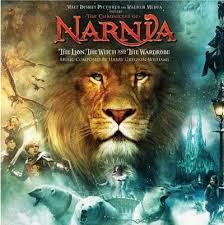Sidney Blaylock Jr.'s Blog, page 63
July 31, 2016
Jason Bourne (No Spoilers) Mini-Review and Writing Implications
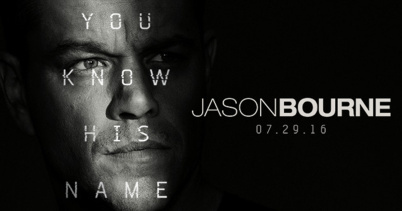
Source: JasonBournemovie.com
So, before I start, let me say that I’m a huge Jason Bourne fan. That wasn’t always the case. I’m a huge James Bond fan as well, starting with the Roger Moore Bond in the late ’70s and early 80’s. I’ve seen every Bond movie (except 1) all the way through at least once (including the George Lazenby). For the longest, I resisted watching the Bourne films, but there was a sale on the 3 movie Bluray boxed set that I couldn’t pass up. I watched the first one and I’ve been hooked every since. This one was the one I was most excited about all summer (hoping that it would top Bourne Ultimatum after the disappointing Bourne Legacy.)
Good, but not Excellent
This is a good, strong, solid movie, but it did not surpass Bourne Ultimatum in my opinion. Rotten Tomatoes (as of current writing gives the score: 57% Critics & 68% Audience. I would give it a B- (80-83) if I were grading it academically. That would put it right on the edge of being above average.
It is an above average movie that is hampered by two significant story problems (and several other smaller problems) that I think hold it back from delivering on its promise. The characters are well done and their lives seem to logically transition from the old Bourne trilogy to where they begin this movie.
Unlike Star Trek Beyond, I saw two glaring problems that were large enough to affect the entire movie (& that’s why I think the review scores are a little on the tepid side.)
Problem 1: Good Beginning, Weak Middle, Strong Ending
The movie starts with a strong beginning. All the pieces “are in play” to use terminology from the movies. And it doesn’t take long for the set-up to pay off and for the action and intrigue that are the lifeblood of the Bourne movies to start. However, after the good beginning, the Middle of the story seems be a series of moves all designed to get all of the relevant players into one city (you know it from the trailers–but I won’t name it less it may be construed as a spoiler) for the Ending. You can almost “see” all the pieces being moved around on the “board” to get this person to the city, that person to the city, these two people to the city, etc. There’s also a “ripped from the headlines” subplot that wasn’t very well developed and might have made the story better had the filmmakers not included it.
Problem 2: Deja Vu’
For me, who has watched the boxed set of the Bourne Blurays multiple times, I felt like the filmmakers made Jason Bourne too similar to another movie in the trilogy. I won’t name which one specifically as I feel that would definitely be too “spoilery.” My contention is that many of the things that happen between that movie and this one are almost beat for beat identical (story-wise).
While there were similar elements shared by the original trilogy, each movie presented an original idea and expressed it originally. This film presents an original idea, but presents it derivatively.
Implications for my Writing
Without spoilers, the resolution of the story was great. But even better was the denouement, or the wrap-up, of the movie. That one scene seemed to turn the audience (the ones that I saw it with in my theater, at least) from neutral to somewhat positive about the movie.
What I learned from watching the audience’s reaction to the end of the movie is that a strong denouement can turn the audience to your side even if your overall structure isn’t the strongest (although it really should be). The movie’s denouement comes directly from who Jason Bourne is as a character. It might even be the movie’s THEME statement about what Jason stands for as character in that film world.
So, when I’m considering what my character’s inner conflict should be, I might always want to consider deciding at the same time what is my THEME and what might be a really unique and inventive way of showing that through the main character’s action in the denouement of the story.


July 24, 2016
Star Trek Beyond: Mini-Review (No Spoilers) & Implications

Star Trek Beyond International Movie Poster from Shockya.com
Fun
So I saw the 3D Imax showing of Star Trek Beyond yesterday and I was really impressed by it. Not to mince words: I loved it! It was a fun movie and harkened back to the things that made Star Trek such a global phenomenon in the first place. There are no spoilers in this mini-review as this is really more of “impressions” than a true review. Currently, this is sitting at an 84% (critics) and 86% (audience) score on Rotten Tomatoes and it is deserved. On a quick side note: see how closely critics & audiences scores are when one side or the other doesn’t have an ax to grind (i.e., Batman v. Superman or Ghostbusters).
Good Plot, Action, & Characterization
Why are both critics and audiences liking this movie? In short, it has a good plot, lots of action, and strong characterization. Again, with no spoilers, the plot is strong. It has a very well defined beginning, middle, and end. The beginning reacquaints us with the characters and starts the problem. The middle is tense and the end ratchets up the stakes in a totally believable way. It follows “Fryetag’s Pyramid” perfectly–in a way I haven’t seen in a while. The action is very well done, in fact, it is second only to Captain America: Civil War this year (so far). I was very impressed with several of the set pieces in the movie. If you can see this in IMAX 3D, do so! It is well worth the extra cost for the action set pieces. Finally, the characterization in the movie is also very well done. One of the most fun things about both Star Wars and Star Trek is the interaction between the characters. The script separates characters in a unique interesting way–it doesn’t stick with the “expected” pairings of characters and this allows us “fresh” perspectives on the various characters through their dialogue and actions. I really like the way the dialogue especially was written and this is the first Star Trek where I feel all of the characterizations “match” completely with those of the original cast.
Rating
I give this one a solid A (a 95-98 if I was grading it academically). Why so much higher than Rotten Tomatoes? Remember, I’m a Sci-Fi/Fantasy reader and writer. This movie was made for me–I’m its target audience. Does it have problems–a few small ones, yes. Some characters don’t get enough screen-time in my opinion, for one, but on the whole, this is a very enjoyable movie that has great action and great heart. It is everything that I aspire to when I write (or what I’m looking for when I’m reading/watching genre works).
Implication for my Writing
So this is a new section that I thought I’d add to (most) every review/mini-review of works as I learn things that I can try to add into my (creative/writing) life. One of the things that I noticed that I liked about this movie was the idea of inner conflict for the main characters. I’m currently stuck on “Project Storm.” I’ve written the first scene and have an idea where to go for scene 3, but scene 2 just won’t come out right–and now I know why. It’s the same reason that many of my characters are “ciphers.” The protagonist for Project Storm has no inner conflict. He has an outer conflict–to save his ship–but there is nothing inside him that he is struggling with. Several of the characters in Star Trek Beyond have a clearly inner struggle that they are struggling with and must find their answers through course of the plot.
I think that I start drafting too soon. I often know the plot (or most of it for short works). I usually have a good grasp of the setting. I don’t think that I often know what my main characters are struggling with when I begin the story. I know what they want or what their problem is (sometimes), but I often can’t say why it matters to them. I’m missing their internal motivations–why is escaping so important to my protagonist of Project Storm? “To stay alive,” would be my answer to that question, but that’s not really an answer. To be alive or to be free AND alive? Those are two entirely different motivations and they change the entire story. Scene 2 will play out much differently if the protagonist just wants to be ALIVE, or if he’s willing to die to stay FREE. And I don’t know yet which one my protagonist would choose. So, to my mind, I’ve started drafting without giving enough consideration to my character (& that to my mind is why I’m stuck!)
So, I’ve gone back and I’m trying to figure out what is the inner conflict that my characters are struggling with before I begin drafting to make the drafting process easier.


July 17, 2016
Current Events and Writing
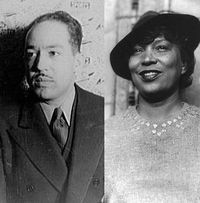
Sometimes you have to take a step back and actually think about what you are publishing and writing. The past week’s senseless violence made me stop and reconsider a story that I’d been obsessing over looking for markets for it for the past 2 weeks. The story was Citizen X and it is an alternate history story. I talked a little about on the blog previously, but it takes an idea about what might the world look like if McCarthy (of the “Red Scare” & “McCarthy Trials” fame) had won the presidential election. I also added in a bit of science fiction to the world and advanced some of the technology by about 150 years just to make it a more interesting place (servebots whizzing around the place similar to our rising drone culture, for instance). My protagonists are Langston Hughes and Zora Neale Hurston and they don’t fare so well in this world, but they are the most equipped to speak out about it in this alternate history. Yet, just as McCarthy used the legal system and the “trial” as hammer in the real world, so too does he use the police force as a hammer in the world of the story.
Hence, the tie to Current Events involving police and deaths. I’m no longer comfortable with the ending that I wrote for Citizen X. (Even the title of the story is meant to evoke the slain militant civil rights leader Malcolm X–a conscious decision on my part).
Now, even though this story was written a while ago, the events that have happened this week are simply too tragic and horrific to be trivialized. Do I want my story to be relevant? Yes, but not at the expense of minimizing the tragedies of people losing their lives. I decided, for the time-being, that I did not want to submit Citizen X out to markets until I either was comfortable with submitting it again or found an ending that is different from its current ending. I actually have a new ending in mind (it is the original ending for the story from a dream I had that helped me conceive the story in the first place), but I wrote away from that ending and tried to make the story “edgy” and “relevant.” But now I’m considering a return back to the old (dream-inspired) ending. As I am discovering, being “edgy” and “relevant” doesn’t make my story better, rather it is a distraction that keeps my art from doing what (I think) good art should: giving a commentary on what it is to be human without me (the author) telling you (the audience) what to think, but rather letting you come to the conclusion on your own. In other words, being “edgy” & “relevant” puts too much of me in the story and serves as a distraction.
Lesson Learned = don’t try to be edgy (or relevant). Just get out the way and tell the best story I can.


July 11, 2016
“I rebel.”
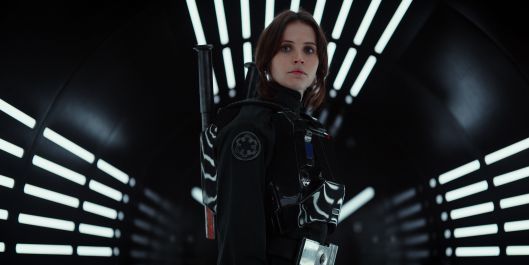
Source: Screenrant (via Google Image Search)
MINI-RANT: Summer Movies 2016 and Low Review Scores
“This is a rebellion, isn’t it? I rebel.” This line comes from the upcoming Star Wars Story: Rogue One movie and it is perfect for the way I feel right now about review scores and many (not all) reviewers this summer. Let me be clear: I am in FULL rebellion mode. I no longer trust reviewers to give a good unbiased opinion as to whether a (summer) movie is good or not for 2016.
As an example, here are some numbers from Rotten Tomatoes (at the time of this writing): The Legend of Tarzan (Critics 36%, Audience 71%), WarCraft (Critics 29%, Audience 79%), X-Men: Apocalypse (Critics 48%, Audience 71%). Metacritic isn’t much better: I checked a Metacritic score for a movie (I believe it was Independence Day 2: Resurgence) and found that a “reviewer” gave it a 0 rating! Zero, really? As an educator who has graded a ridiculous amount of student work, I know that zeroes SHOULD be reserved those who don’t turn in the assignment. If you turn something in, you get some credit for it, if just for attempting it. I’m not giving the reviewer’s name nor linking to his review as I don’t want to give him “hits” for the review.
These are gaps of 30-40 points with a 50 point gap on the extreme end. Are critics so out of touch with their audiences’ expectations, or is something else to blame. To me, this goes far beyond giving a negative review to a product you don’t like and delves into the realm of propaganda. You don’t like something and you don’t feel anyone should like it, so you bash it and badmouth it to the point where it can’t make enough money to survive in the marketplace. How else would you explain the Batman v Superman: Dawn of Justice numbers? BvS (Critics 27%, Audience 66%). Compare that to Captain America: Civil War (Critics 90%, Audience 90%). Again, all numbers are at the time of writing.
Wow, would you look at that? A movie that the critics liked and want to see more movies made in that style happens to match almost identically, some might say magically, the audience rating. What a strange coincidence!.
In reality, if reviewers are really doing their jobs and objectively looking for things in the movie that were well done and things that were off-putting, then the audience and critics should be nearly in lockstep (within, say about 10% of each other to account for various tastes in the marketplace.) Let’s see if this holds true: Secret Life of Pets (Critics 75%, Audience 69%), Independence Day: Resurgence (Critics 31%, Audience 36%), Central Intelligence (Critics 68%, Audience 70%), Conjuring 2 (Critics 79%, Audience 85%). If critics were as out of touch with their audiences as the BvS and WarCraft scores indicate (among others) shouldn’t The Secret Life of Pets be off by 20 or 30 points?
This is why I’m rebelling. I’m going to see the movies that I’ve already determined that I want to see irregardless of the critical reception. I may be swayed by the audience reaction should an audience score be much, MUCH lower than I anticipated, but right now, as a group I feel that many mainstream “reviewers” are not trying to even be objective about some of the movies that are releasing this year.
In closing, I think I’ll mention the review that I saw of Batman v Superman the night after I saw it in the theaters (yes, its gotten SO bad that I don’t even watch the reviews until AFTER I’ve seen the movie for myself). One reviewer called it “a mess” and couldn’t wait to talk about how bad it was. Yet, I enjoyed it and my mother and stepfather who grew up on the golden age Batman and Superman comics enjoyed it. So, I’m left to wonder, was the movie really that bad, or are you (as a critic) tired of Zack Snyder’s “style” because its the same “schtick” that you saw in 300 all those years ago (which was a “revelation” back then because it was NEW) and now you want to punish him and DC/Warner Brothers (which is all this particular reviewer really seemed to want to do).
So, until review scores get back in line with (what I feel) are audience expectations, I’ll trust my own judgment on what is good and bad at the movie theaters. Does that mean that I’ll probably see a “clunker?” Probably, but at least I won’t miss a truly spectacular movie because a reviewer has an axe to grind (aka Batman v Superman: Dawn of Justice) or even a fun summer popcorn movie (aka WarCraft).


July 4, 2016
It’s that Time of Year Again . . .

Source: Letour.fr
Yup, it’s that time of year again–The Tour De France 2016 (aka “my annual 3 week production drop”). It’s that time of year when my brain goes into “shutdown” mode and I gorge on four hours plus of race coverage for 3 weeks straight (including the “Rest Days” as I end up watching reruns of the previous days race even when there’s not a race on because I can’t bear to be without the race. Sad isn’t it? :0 )
I love watching the Tour and I have since the mid-80’s when Greg Lemond was participating in the Tour. This (after E3) is my unofficial “Me” time where I put most everything aside and just watch. I’m not a huge TV watcher, meaning that I’ll turn it on , but unless I’m invested in a (sci-fi and/or BBC) show, it is just “background” for me. The Tour is one of those few exceptions.
“Project Storm”
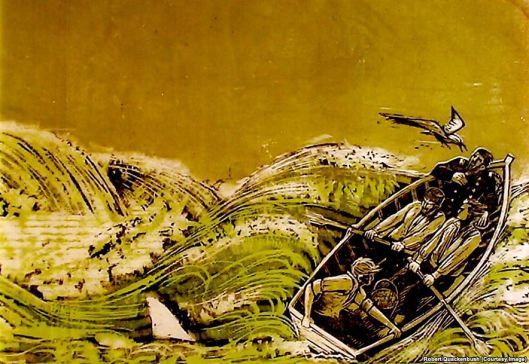
Source: learningenglish.voanews.com
Surprisingly enough, this year I’m actually still producing work. I just started a new short-story tentatively titled, “Project Storm.” For those who are interested, it was inspired by “The Open Boat,” by Stephen Crane. I’m less interested in the actual plot of the story and more interested in some of the comments/thoughts of the men. More on the genesis of the story in an Author’s Note when I finish it. This one may be one of my shorter works–I’ve finished Section 1 and I’m thinking there’s only going to be 3 sections, but that may change.
Outlining Longer Works — “Project Skye”
A few posts ago, I was bemoaning the fact that I’ve not outlined anything any of the longer works that I would like to work on and summer break is quickly coming to an end. So, with that in mind, I grabbed my notebooks and began going through them looking for ideas that I could use for Chapter Headings/Titles. I put down around 60 or so possible chapter titles (whew!). I’ll start whittling them down and then I’ll see if I can put a sentence or two description about what happens in each chapter while watching the Tour. Who knows, if I’m really lucky, I might have a novel outlined by the time race concludes in 3 weeks. How cool is that? Wish me luck! :)
Goal: to have an outline finished by Summer 2016 so that I can start writing chapters in my (rare) downtime, so that by the end of the 2016-2017 school year, I have the “rough draft” of my first novel completed!


June 26, 2016
Author’s Note–WarLight
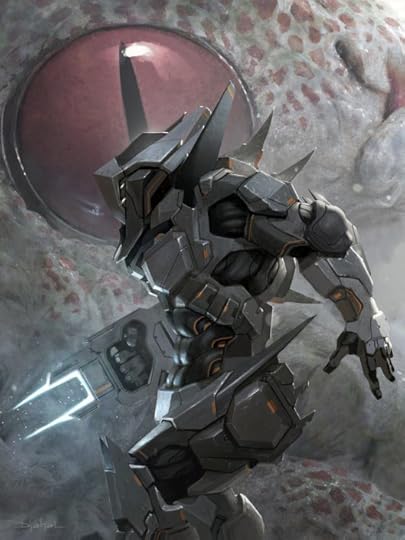
“The Demon Killer” Geoffroy Thoorens (ArtStation.com)
So this blog post is an examination of some of the inspirations, challenges, and final thoughts for my newest short story WarLight (formerly known as “Project Light.”) This has been a hard story to complete, but it is finally finished. I will let it “sit” for a while and will revise it based on feedback from my “Beta readers.”
The genesis of this story is simple: it is the “Halo-Killer” that I always wanted Sony to develop for the PlayStation. Bungie originally intended Halo to be a multiplatform game and I followed its development with great interest. Then Bungie’s website “went dark” and then when it came back, the game was suddenly Microsoft only. I despised that tactic of “buying” a 3rd party game to “deny” it to your rivals and MS lost me as a customer for their game system with this philosophy. There was always talk of Sony developing its own Halo-Killer, but Killzone, the game that was touted as the sci-fi shooter of the PlayStation, didn’t achieve the level of heights that Halo commanded.
Halo worked because it started with a cool sci-fi premise and then added an “everyman” character on to it. Add in awesome vistas, cool secondary characters, a menacing enemy and a story where one man could save the world, and you had an instant sci-fi classic (the “new” Star Wars).
I tried very hard to start off with a cool sci-fi premise: what if your world’s sun would go not just supernova, but hyper-nova. This would generate a shockwave of light, heat, and radiation that would all obliterate everything in its path for hundreds of millions of light years. What if a civilization could just barely stay ahead of the wave, their technology only allowing them to “jump” up to a couple weeks ahead of the doom–a vast array of ships, collectively known as the Fleet–all jumping, emerging into real space for a week or so scavenging resources and jumping out again?
What if the Fleet got trapped?
This is the story that I try to tell in WarLight.
The hero of the story was born in the weeks after my grandmother passed away, so he has a “darkness” about him that is unusual for my characters (no, he is not “morally ambiguous”–a term I hate with a passion–rather, he looks at the death and destruction and wonders what is the use of trying).
The actual story takes place on a planet and that is taken from a dream that I had about kids arriving on world with a long dead civilization and awakening an ancient evil.
The theme was originally going to be “Fight on no matter what,” with epigraphs taken from “Do Not Go Gentle into that Good Night” by Dylan Thomas. However, he is contemporary enough that his poem is still in Copyright, so I was unable to use it without obtaining permission.
The story floundered for two years–I’d write the first paragraph down (sometimes more), but each time I’d be unsatisfied with the way it turned out. It never made it past the first couple of paragraphs.
I was determined to write it this year and I was originally going to write it to be submitted for Visions IV. It was the 1st story I started working on in 2016. I then reread the guidelines and saw that stories for that anthology needed to be in space not on a planet and so I had to switch from writing WarLight to Ship of Shadows.
After, I had finished and edited Ship of Shadows, I thought it would be easy to finish up WarLight. Boy, was I wrong! I still had the same problems and issues as before, not having a way to illustrate my theme and not understanding enough about my main character (named Tyrian in early drafts).
Finally, in late April/early-mid May, I happened to be going through my Literature books and remembered “Charge of the Light Brigade” by Alfred, Lord Tennyson. I was able to adapt that poem to my use for epigraphs and also to refine my theme to be “find something to live for even in the face of great tragedy.”
I copped out on the original ending. I needed another day to finish it, but I had literally an hour before the place where my “beta readers” worked closed, so I wrote a dreadful ending. I wrote the “real” ending over the weekend and emailed it to the beta readers, but I don’t know which one they prefer yet–although I know which one I prefer.
The artwork is by the artist Geoffroy Thoorsen via ArtStation and you can find his work there and at his website (DjahaLcom). The title of the piece is called “The Demon Killer,” and the suit is similar to what I’m hoping to convey to readers of the story. This is another artist I would love to work with in the future. He “gets” my type of sci-fi.
I plan to revise it when it is time to submit to Carrol Fix’s next Visions anthology.


June 19, 2016
Mini-Reviews (Warcraft & Hitman: Agent 47)
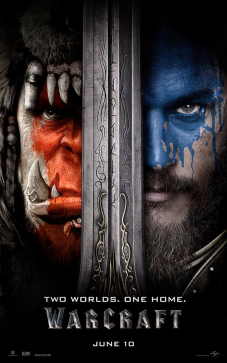
So, this post was going to be the Author’s Note for “Project Light,” but I was unhappy with the ending, so I’m in the middle of rewriting it.
I saw two video game related movies this week, so I’ll touch on that instead and revisit Project Light.
WARCRAFT (No Spoilers)
This is the first movie that I saw this week and it is a competently made movie. My grade for it would be C+/B- if you like Fantasy (probably a full grade lower if you don’t). It isn’t a bad movie (certainly not the travesty that the movie critics/reviewers would have you think), but it isn’t a top-tier movie. The acting is fine and the special effects are pretty cool. The problem (mostly) is with the story. Many of the motivations of the characters seem pretty thin–they do things and tell the audience why they are doing those things, but many times you are wondering “why?” For instance, the “bad guy” is bad because he couldn’t fight the “power” that was making him bad. Well, why go looking into that power to begin with? I’m sure that the lore of the world of Warcraft explains it all, but without context, it makes it hard for the audience to follow. For instance, the scene with Luke Skywalker training with the probe with Ben Kenobi while Han is skeptical in Star Wars: A New Hope explains both Ben’s and Han’s world views. To Ben, there is Force that guides and helps, if you’re willing to believe. Han only believes in what he can see, hear, feel. During the “trench run,” Ben’s disembodied voice reminds Luke to “Use the Force.” Luke has to make a choice: Faith vs Technology. Does he believe that there is a high “Force” that will guide him, or is he bound be the technology around him: his ship, his computers, what he can sense in the physical world only? This is a very human choice and the outcome of the story rests on that choice. Warcraft is missing those type of scenes. The characters may say they want one thing or another, but their actions don’t convey their convictions. Without spoiling the movie, there is a scene where someone clearly cheats and goes agains the “honor” of the people. Yet, that person is still followed by the people. Why? Fear, not wanting to change, or some other reason? The answer is not clear, but even though much is made of honor, they still chose to follow one who clearly has no honor. There are simply too many of those to ignore. It doesn’t ground itself in “human” choices and as such doesn’t connect as well as the top tier movies do.
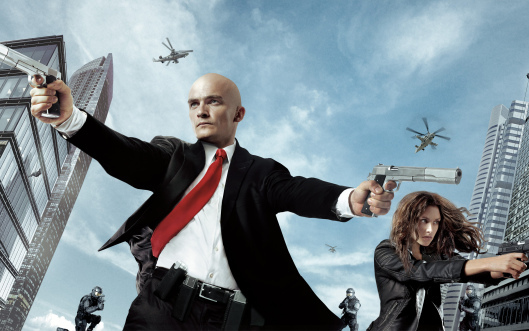 Hitman: Agent 47
Hitman: Agent 47
Hitman: Agent 47 suffers from a different set of problems, although lack of motivation is still central to why it also doesn’t work. I would grade this one as a D+ (Below Average). The main problem with Hitman is that the script/story doesn’t know who it wants to be as the protagonist. It really wants to have two protagonists: Agent 47 and Katia (the woman featured above). The story doesn’t have a clear view of the characters and doesn’t present them to us well in the movie.
This is one of those times when the cliche “style over substance” is appropriate. To the movie, gunplay and stylish kills are more important than anything else in the world. They prioritize cool gun work and fight scenes over characters and story construction. You’ll wonder why certain characters are acting the way they are even more in this movie that in Warcraft. There are many stories that could be told in this movie: Revenge, Redemption, Protege, etc., but because the filmmakers aren’t sure which character is the protagonist, the story that is told is very fragmented and doesn’t hold together well.
While I was watching the movie, The Mask of Zorro kept coming to mind. This would have been an awesome “Protege” movie had the filmmakers decided that Katia was the protagonist. The problem is that would have meant relegating 47 to the background, something that the filmmakers weren’t willing to do. This movie could have really been a hit, but this is one time where having a license to a character really hurt a licensed movie as there was no consensus on a clear protagonist.


June 11, 2016
Writing to Music (Chronicles of Narnia Soundtrack)
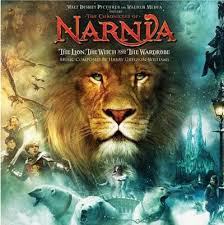
I’m in the middle of writing “Project Light.” Literally, I’m right in the middle of the project. It will have 5 total sections and I’ve completed two of them and I’m at the midway point of section 3. To say that it has been an long hard journey would be an understatement. For the reasons why, please check the blog entry before this one and it should give you some context for why this story has 1) been floating in my mind for a while and 2) why it isn’t nearly as easy to write as something like Here Be Monsters.
To make the journey easier, I’ve gone back to doing something that I’ve done for a while, but discarded–picking a movie soundtrack and writing the story based on the “feeling” that I get from the soundtrack. When I write, I try to pick (sometimes consciously, sometimes unconsciously) the soundtrack that I own (& I buy quite a few per year) that best matches the “tone” of the story. Now, I should probably clarify: when I say soundtrack, that refers really to the film’s score and any additional tracks that may come with it. Actually, songs/soundtracks (music with words) aren’t really that helpful to me as the words of the songs generally get into my way when I’m actually composing/drafting my work. I do find some songs useful sometimes as they establish the “tone” that I’m going for (light, dark, dramatic, playful), but when I’m actually writing the work, I only want to accompanying music so that I can find the right words to illustrate the “picture” that I see in my mind’s eye.
Setting the Tone
I thought for this entry I would choose 2-3 of my favorite tracks and link to them. First, I think it is important to show what purpose they music plays in my writing and second, I’d like to show how picking the right music can help you by putting you in the right frame of my mind.
WARNING: These are YouTube videos and (usually) begin to play right away. While they ARE appropriate (no bad language), if you have the volume all the way up or you are at work or school and could get into trouble for watching/listening to videos, you may want to turn the volume down or wait until you get home to listen to these tracks.
This is the first track that I start up and it establishes the “mood” of “Project Light.” There is a melancholy timbre to the track that I think works great for the project. The words, however, are ultimately hopeful. That is what I hope to portray in the story–a sort of melancholy hopefulness that says, “hey, everything is pretty awful right now, but keep striving and things could be better.”
The Battle by Harry Gregson-Williams
This is my go to piece when I’m writing a battle scene or exciting action scene. I like the slow build-up to the thunderous music, but right in the middle after the choir finishes, there is a section that is just genius. The music builds a second time and there is a moment when all the orchestra and choir drops out and you are left with just percussion and horns that really inspires me and pushes me deeper into the story. Every time I hear that section, its like the picture in my mind crystalizes and I can see it perfectly and it’s just up to my fingers to find the correct words to get it down into the computer before it fades away. (I’m listening to it as I type these very words and even after hearing the music all week, this song still gives me chills.)
Can’t Take It In by Imogen Heap
This one I use because I simply like the music. It has a hopefulness, that unlike Winter Light, is completely free on melancholy. This one reminds me of the wonder of writing, or creating, of bringing something that existed only in my mind to fruition. It also helps to remind me of the wonder of Science Fiction and Fantasy. There is a graceful expression of the joy the genre brings to me when it is done correctly.
There are many other fine tracks on the soundtrack. If you are interested, you can find the whole soundtrack in many places. I just wanted to illustrate a tool that I’m using to help me finish “Project Light.” I hope you enjoy the songs!


June 3, 2016
“Project Light”-A Science Fiction Story
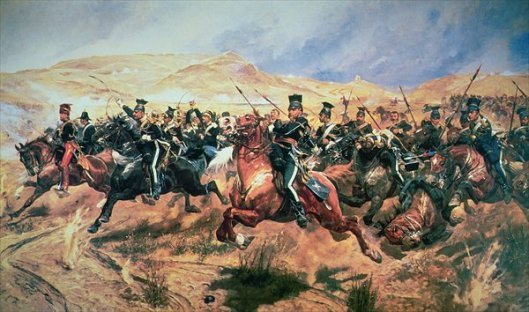 T
T
The above picture is a painting by Richard Caton Woodville, Jr. It is a painting of the “Charge of the Light Brigade,” made famous by the poem of the same name by Alfred, Lord Tennyson. I am using this poem as an epigraph for my story “Project Light.” I am also using the poem to help define the theme of the story. I’ll do a proper Author’s Note on the story after I finish it, but I wanted to jot down my reactions on creating this story up to this point.
This is the story that I wanted to work on after Ship of Shadows (aka “Project Shadow”). However, this story wasn’t coming together. I knew the main character, I knew the plot, I knew how I wanted the story to end, but this story would not come together. Here are 3 reasons why (after reflecting about it and looking at it through the lens of hindsight):
It was conceived in the weeks after my grandmother died. It was conceived as sort of an elegy to her. A celebration of her strength and determination and of living well despite a life of unfulfilled dreams. She often lamented that she was born “50 years too soon.” It staggers my mind and boggles me when I think of all of the opportunities that she missed now that the world has changed. I wanted a way to celebrate her in writing and this story came to me. This is an emotional story to write as I want to get it right and I’ll accept nothing less than “perfection” for this particular story.
As a result of number one above, it is a very personal story. The hero has more of “me” (the author) in him than any of my other stories. To be clear, the main character is NOT me, the author. It just means that at any given time their are more of my thoughts and traits in him than for other protagonists that I’ve created. In other words, I’ve made up “less” and reached into myself “more” when illustrating the things he does, where as other main characters, I’ve tried to pull out my own personal traits and thoughts and put in the traits/thoughts of others who I’ve run across. This probably the most “autobiographical” story that I’ve done (which just means that the rejections are going to be harder to take whenever I do finish and start submitting this story)
It deals with a number of topics that are (to put it bluntly) pretty harsh. It deals with the idea of losing ones family, of continuing through on through the pain of loss, and of the nature of death. I’ve been in a college classroom where a student unbeknownst to me committed suicide and I was asked if I knew him because I sat only a few seats from him. I’ve been in another college classroom where a classmate died only a few weeks before the class was finished because he didn’t have medical insurance and refused to go to the doctor due to the cost.
None of these things are easy to deal with. Add to the fact that I try to use my writing and reading to “escape” from these topics mean that this story is hard to write to say the least. My sci-fi and my fantasy are the very definition of escapism. Yet this story demands to be written. Like another story I have in mind (another “hard to write” one–for different reasons), it will NOT leave my mind. I can see it just as well as I see this one and eventually I’m going to have to put it down on paper as well.
Yet, I can’t make myself to give into the “Grim Dark” movement that is currently so popular. Will my protagonist make it out or will he succumb to darkness? The plan is that he will come out, but will be forever changed by his experience. And that, to Edgar Allan Poe (creator of the short story form) and to Alfred, Lord Tennyson (author of The Charge of the Light Brigade) is very purpose of fiction: to inform, to elucidate, and to illuminate the human condition.


May 30, 2016
Nulla Dies Sine Linea (No Day Without a Line)

“NO DAY WITHOUT A LINE”
It’s summertime and school is out! As I write this, it is Memorial Day, an American Holiday to remember those who have served (or are serving) in the military and who have been willing to sacrifice themselves in defense of the nation! Go Troops!
It is also the “unofficial” start to summer in the U.S. and for most teachers, it means that school is out until the fall and that the next 2-3 months are our own. Usually, that means housework/yard work that we have put off during the spring months to concentrate on finishing off the school year strongly. While I have my share of yard work and housework to do, I also have decided that summer should be a time to recharge/refocus my writing.
To that end, I’m going to follow the latin line: Nulla Dies Sine Linea (“No Day without a Line”). Everyday, I’m going to write something. A paragraph for “Project Light,” or plan out a chapter for “Project Librarian,” or something similar.
Now that I know that my writing will fail without proper planning, why not use the time time that I’ve been blessed with during the summer to make sure that I get the ideas, plots, characters and projects down on paper (in the computer, tablet, or notes) and make sure that I have plan for everything that I want to work on during the upcoming Fall.
HAVE POSTCARDS, WILL TRAVEL
To that end, I’ve broken out my old standbys: unlined postcards. I used to use these in graduate school for jotting down/taking notes for some of the more esoteric philosophies of various rhetoricians and tracking the arguments of various orators.
They’ve also served me well when I wanted to work out the basics of a plot outdoors (I don’t live in a neighborhood that’s conducive to showing off your possessions.) Postcards are extremely portable and as long as I have a writing instrument, I can jot down notes/ideas as they come to me (something that I’ve been using my phone/tablet to do lately).
I’ve jotted down a character idea that’s been floating in my head for most of May and on the back, hopefully a story idea (aka plot) will present itself. If so, I’ll jot it down along with a quick rough draft of the story and then move on to the next idea. If I can consistently do this for the next 2.5 months before school begins, I should have an outline of quite a few short projects and a COMPLETE outline for a few longer projects. So far, I’m batting 1 for 1 as I’ve already completed my postcard for today (Yay me!)
PATROL SHIP “FIRE ANT” IMAGE BY MAURIZIO BARABANI
So, when I was looking for an image to illustrate my title, I stumbled across this spaceship image that I found pretty intriguing. I decided to investigate and discovered that the image came from the website of an artist. While it looks like he mostly does contemporary art, there are some genre pieces in his Portfolio.
The artist’s name Maurizio Barabani. I’m linking to his Website/Porfolio Page, his Facebook Page, his Blog, and his ArtStation Page. It looks like he’s Italian. Man, looking at some of his genre work makes me wish that I could speak Italian. It would be awesome to work with him on a Graphic Novel of some sort. Anyway, give him a look and perhaps a “Like” on his Facebook page. He’s doing some awesome work!



